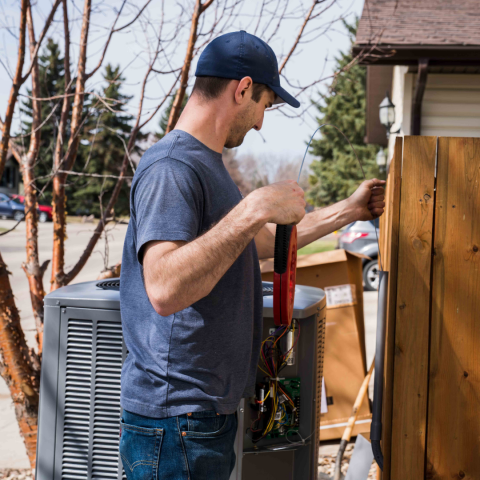A stone pyramid with steep, angled sides rises 35 feet above a back road just outside New Florence.
Though silent now, it was humming with activity in the mid 1800s when it was a vital part of Westmoreland County’s early iron industry.
Laurel Hill Furnace, at 114 Wyoming Lane, off Furnace Lane, was in operation from 1845 to about 1860. In its heyday, crews of 15 to 20 men were busy around the clock, smelting iron ore into blocks of crude iron, also known as pig iron.
Listed on the National Register of Historic Places, it’s one of the most intact of 16 such blast furnaces that took shape in the county, between 1792 and 1855. Its current caretaker, the Ligonier Valley Historical Society, is looking to raise money to help keep it that way.
“It’s one of the best-preserved specimens,” said Theresa Gay Rohall, executive director of the Laughlintown-based historical society. “We don’t want to let it go (downhill).
“The back corner of the foundation has been sinking, causing many mortar cracks. Each winter that we go through will worsen the problem.”
With a $19,265 grant from the Pennsylvania Historical & Museum Commission, the society raised a matching amount and hired the local Markosky Engineering Group to complete a study of the furnace and make recommendations for stabilizing and rehabilitating it.
The society received an additional matching grant of about $72,000 from the commission, to help put that preservation plan into action, when the covid pandemic arrived in the region.
“Now that we’re past the crisis of the pandemic, we can begin to concentrate on raising that additional sum by September of this year,” Rohall said.
Following up on ground-penetrating radar Markosky used at the site, trenching is planned around the furnace to pinpoint the depth of the foundation and select an option for shoring up the section that’s sinking.
According to Rohall, masonry and mortar will be repaired in select areas and the furnace will get a new concrete cap, “to direct water runoff away from the opening of the furnace and protect the flue and furnace liner. There was a cap on it, but it wasn’t of an adequate size.”
In the first half of the 1800s, growing communities in Western Pennsylvania created a demand for iron products and tools, and resources were readily available to fuel the furnaces — such as Laurel Hill — that met that need.
Trees could be felled to create charcoal for firing the furnace. Access to waterways also was critical. A wheel, driven by water channeled from a dam on adjacent Baldwin Creek, powered a bellows at Laurel Hill Furnace. Pig iron produced at the furnace could be shipped to Pittsburgh via the nearby Conemaugh River or Pennsylvania Main Line Canal.
Laurel Hill Furnace at one point was owned by Judge J. T.Hall of Centre County, according to “A Guide to Old Stone Blast Furnaces in Western Pennsylvania” by Myron R. Sharp and William H. Thomas, published in 1966 by The Historical Society of Western Pennsylvania.
The Ligonier Valley Historical Society noted in a recent blog entry that the furnace’s weekly output averaged 33 tons of pig iron but sometimes totaled 40 tons. Some of the iron was used at the site, cast into items such as pans, kettles and horseshoes for the local populace.
So, the society believes the furnace complex would have included a blacksmith shop and stables for livestock used to haul the raw iron or finished products. In addition to those manning the furnace itself, up to 50 others likely were employed cutting wood. making charcoal and hauling charcoal or iron products.
The defunct furnace eventually was donated to the Western Pennsylvania Conservancy, which then turned over the site to the local historical society in 1991. Visitors will find an interpretive sign at the site.
Other local furnaces
Michael Mance, a local history buff who grew up in Delmont, has been honored with the Westmoreland County Historical Society’s Arthur St. Clair Historic Preservation Award for his work documenting remnants of the area’s industrial past at coalandcoke.blogspot.com.
He has traveled to local iron furnace sites, including several that can be viewed by the public between New Florence and Ligonier.
Baldwin Furnace, built in 1810 — Continuing along Furnace Lane, past the Laurel Hill Furnace, brings you to State Gamelands No. 42 in St. Clair Township. After parking in the lot, you can reach the remains of the Baldwin Furnace by hiking a little over a mile along a dirt road in the gamelands.
Mance explored the site during summer and recommends against visiting during hunting season. In addition to the furnace, he said, “You can see some old iron slag and stone walls around a mill race where the water wheel was.”
Ross Furnace, 1815 — Located along Tubmill Creek in Fairfield Township, it can be reached by heading south on Route 711 from Laurel Valley Elementary School and turning left onto Clark Hollow Road. Follow Mountain View Road to Ross Mountain Park Road. The furnace is on private land, the Ross Mountain Club golf course, but can be seen from the public road.
Valley Furnace (Hillsview Furnace), 1850 — Located in Ligonier Township, it can be reached by heading north on Route 711 from the junction of Route 271. Turn right onto Owl Hollow Road and drive two-tenths of a mile. The furnace is on private land, next to a cow pasture, but can be seen from the road.
